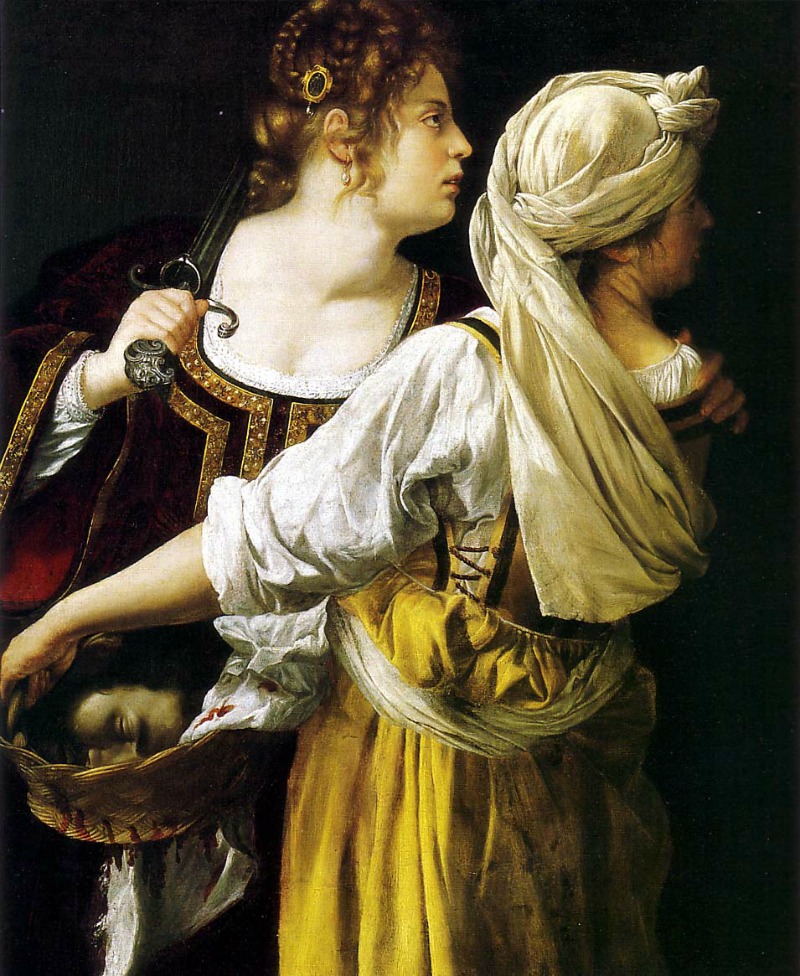Guess the Artwork

Giuditta con la sua Ancella - Judith and her Maidservant Oil on Canvas by Artemisia Gentileschi 1618-1619 Galleria Palatina, Palazzo Pitti, Firenze.
Artemisia Gentileschi was an Italian Baroque painter, known not only for the beauty of her work but also for being the first woman to become a member of the Accademia di Arte del Disegno in Florence at a time when women painters were not easily accepted by the art community or patrons.
Today she is regarded as one of the most progressive and expressionist painters of her generation, one of the most accomplished painters in the generation following that of Caravaggio.
In 1611, her father, Orazio, was working with Agostino Tassi in the Pallavicini Rospigliosi Palace in Rome, and then hired him to tutor his daughter privately. During this tutelage, Tassi raped Artemisia.
She painted many pictures of strong and suffering women from myth and the Bible—victims, suicides, warriors—and made it her speciality to paint the Judith story from the Book of Judith in the Old Testament.
Soon after her first version of Judith beheading Holofernes, in 1614, Artemisia painted her initial rendition of Judith and Her Maidservant. In this painting, they have just killed Holofernes and stuffed his head into a basket. The painting is notable not only for its interesting use of color, but also because it manages to freeze on canvas a moment of tension, they have not yet escaped the camp and react to a sound off-canvas.
On Judith's sword is the image of a gorgon, symbol of the monstrous power of the violated feminine. The ornament in her hair features a picture of a man with a lance and shield, probably David, decapitator of Goliath, the male equivalent of Judith.
According to some critics this painting might reflects her attempts to resolve feelings about Tassi. She succeeds at the ultimate revenge by killing the aggressor, but at all times remains in control. The decapitation suggests the symbolic castration of Tassi.
That she was a woman painting in the seventeenth century and that she
Artemisia personal story, her rape and her participation in prosecuting the rapist, and the fact that she was the first woman painter welcomed by the Academia in Florence turned her for many centuries into a curiosity and overshadowed her achivments as an artist.
Old stereotypes of Artemisia as sexually immoral were more recently replaced by new stereotypes established when her work started to be interpreted within modern feminist discourse.
Today she is finally regarded as simply one of the most progressive and expressionist painters of her generation.



